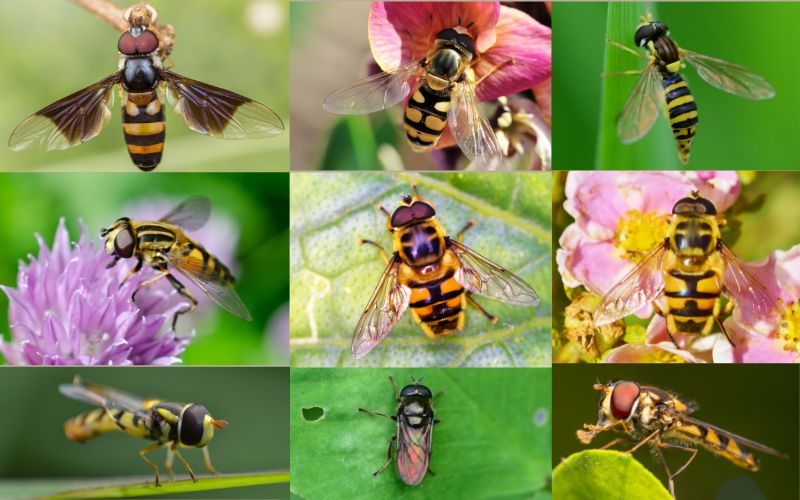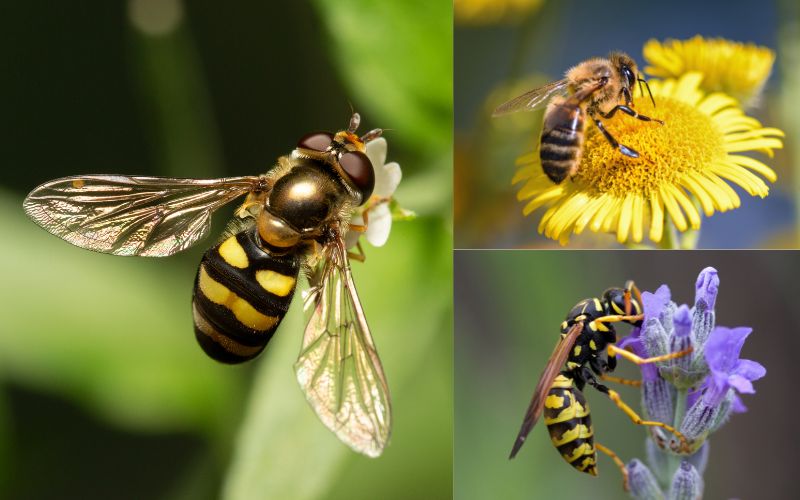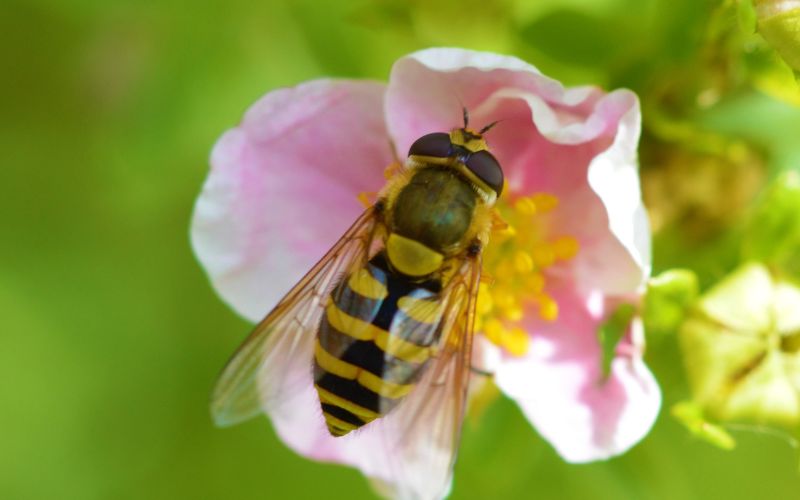Hoverflies, also known as flower flies or syrphid flies are a large group of several species of flies. They are seen more frequently in warmer climates or warmer months.
This article describes how hoverflies act as both pollinators and as a predator of many common pest insects, and how you can identify and attract these beneficial insects into your garden.

Adult hoverflies are pollinators
As their names suggest, adult hover flies or flower flies hover around flowers, feeding on nectar and pollen. Their feeding behavior helps to pollinate flowers.
Many species of hoverflies mimic the coloration of bees and wasps. Similarities in their feeding can make it difficult to tell them apart.
Hoverflies can be differentiated from bees and wasps mainly by their typical fly-like head. In addition, they have only a single pair of wings instead of the two pairs of wings that bees and wasps have.

Hoverfly larvae for biological pest control
Adult hoverflies help pollinate plants but their real value is in the pest-eating ability of most species of hoverfly larvae. Hoverfly larvae have a maggot-like appearance and may be white, green, or brown in color they are very good at eating aphids. Each larva can eat about 100 – 400 aphids, based on its size at maturity, by sucking out the insides of each aphid.

In fact, sometimes hoverflies lay their eggs among aphids so that their larvae have enough food as they hatch. They can also eat other soft-bodied pests and other insects. Once the larvae have molted a few times, they turn into pupae, from which the adult emerges.
Attracting hoverflies into your garden
The main way of attracting hoverflies into your garden is to plant nectar and pollen-rich plants. You can do this by planting flowers, such as daisies, fennel, sunflowers, lavender, zinnias, and mint, among your vegetable plants or by planting a wildflower border near your vegetable garden.

As always another important way of making sure that your garden is hoverfly-friendly is to keep away from using any harsh chemicals, such as pesticides and weedicides. Harsh chemicals make your garden unsuitable for hoverflies and other beneficial insects, as they kill both these beneficial insects and the pests that the hoverfly larvae feed on.
Hoverflies are a unique group of beneficial garden insects as they help with both pollination and pest control. Adult hoverflies feed on flower pollen and nectar, while the larvae of most species feed on aphids and other pests. Planting nectar and pollen-rich flowering plants and refraining from using harmful pesticides and other chemicals are the best ways to attract hoverflies into your garden.

